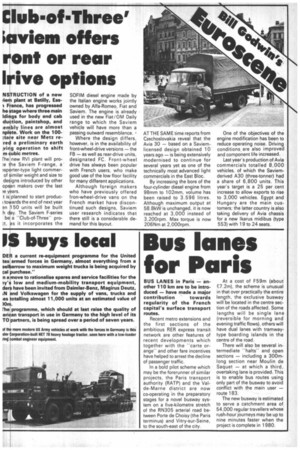Bus lanes for Paris
Page 29

If you've noticed an error in this article please click here to report it so we can fix it.
BUS LANES in Paris — another 110 km are to be introduced — have made a major contribution towards regularity of the French capital's surface transport routes.
Recent metro extensions and the first sections of the ambitious RER express transit. network are other features of recent developments which together with the "carte orangeand other fare incentives have helped to arrest the decline of passenger traffic.
In a bold pilot scheme which may be the forerunner of similar projects, the Paris transport authority (RATP) and the Valde-Marne district are now co-operating in the preparatory stages for a novel busway system on a five-kilometre stretch of the RN305 arterial road between Porte de Choisy (the Paris terminus) and Vitry-sur-Seine, to the south-east of the city. At a cost of F59m (about C.17.2m), the scheme is unusual in that over practically the entire length, the exclusive busway will be located in the centre section of the roads affected. Some lengths will be single lane (reversible for morning and evening traffic flows), others will have dual lanes with tramwaytype boarding islands in the centre of the road.
There will also be several intermediate -haltsand open sections — including a 300mlong section near Moulin de Saquet — at which a third, overtaking lane is provided. This is to enable bus routes using only part of the busway to avoid conflict with the main user — route 183.
The new busway is estimated to serve a catchment area of 54,000 regular travellers whose rush-hour journeys may be up to nine minutes faster when the project is complete in 1980.




































































































